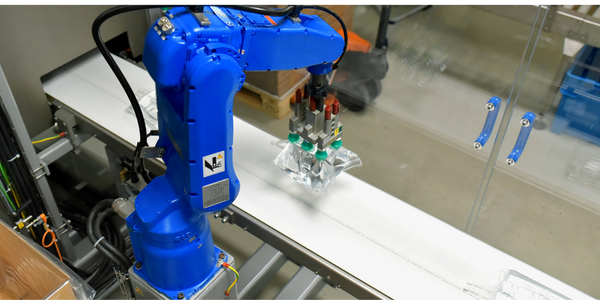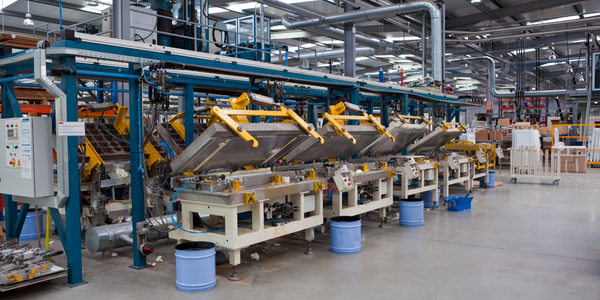技术
- 分析与建模 - 机器人过程自动化 (RPA)
用例
- 对话机器人
- 时间敏感网络
关于客户
本案例研究中的客户是一家全球领先的专业服务公司。他们正在努力应对新员工处理时间过长的问题,尤其是在入职高峰期。该公司依靠人力资源、IT 和设施团队执行的传统手动入职流程来招募客户的合同资源。这使得该流程变得笨重且低效,他们正在寻找一种解决方案来自动化入职流程,以确保新员工获得顺利的首次体验。
挑战
一家全球领先的专业服务公司正在应对新员工处理时间长的挑战,特别是在入职高峰期。该公司严重依赖由人力资源、IT 和设施团队执行的传统手动入职流程来招募客户的合同资源。这种对手动流程的依赖使得入职体验变得笨拙且低效。入职流程对于新员工在组织内的成功和长期任职至关重要,这对于有机融入公司流程和文化的机会较少的远程员工来说更为重要。
解决方案
为了应对这一挑战,部署了 JIFFY.ai,以实现客户 80% 的远程入职活动的自动化。这种自动化显着减少了对手动流程的依赖,使入职流程变得无缝,并确保为新员工提供积极的体验。该解决方案涉及开发一个门户网站作为快速解决新员工查询的一站式服务,设置交换邮箱以便通过机器人与新员工进行无摩擦沟通,并为新员工创建用户 ID,提供对内部系统的适当访问权限和知识库,全部通过智能机器人实现。这种乏味且耗时的任务的自动化使人力资源团队能够专注于需要创造力和思考的关键、战略性工作。
运营影响
数量效益

Case Study missing?
Start adding your own!
Register with your work email and create a new case study profile for your business.
相关案例.

Case Study
HSBC's Transition to Conversational Banking through Intelligent Automation
HSBC, one of the world's largest banking and financial services organizations, was facing a challenge with its customer service operations. With over 19,000 customer service agents, the bank was dealing with a high volume of repetitive tasks that put pressure on its agents. The traditional career path in the contact center world was also leading to inevitable attrition, as it was defined as agent → team manager → department manager → operations manager → head of contact centre. This lack of opportunity as the field narrows held back the chance of reaching the highest possible customer satisfaction with every interaction. Furthermore, HSBC was planning to shift towards Conversational Banking, which was expected to grow interactions considerably and require conversational experts to manage the chatbots.

Case Study
Centralizing Data for Improved Efficiency: A Case Study on Malvern Panalytical
Malvern Panalytical, a UK-based hi-tech electronics company, was grappling with the challenge of decentralized data storage. The company had a vast amount of unstructured data scattered across various platforms, from hard drives to emails and floppy disks. This made the data searching process extremely cumbersome and inefficient. The company's rapid growth, from 200 to over 1,000 employees in a decade, and expansion across three continents further exacerbated the need for a more structured and centralized data system. As a company involved in electronics manufacturing and software development, it was crucial for Malvern Panalytical to find a platform that could structure all their data, track all modifications of documents in real time, and provide clear visibility of the internal information flow across all its facilities.

Case Study
Managed Hosting Platform
Formula 1® is a sport where every millisecond matters. With changing preferences and the growth of the digital medium, many fans choose to experience the sport through the F1.com website. The website needs to deliver a superior experience to tens of millions of fans across the world consistently. Hence, it is imperative to have a robust platform that can deliver the required performance and scale with growing trac and dynamic fan expectations. Some of the key challenges are: • Every race weekend, Formula1.com attracts up to 7 million fans. Managing this huge surge in website traffic, requires a scalable hosting platform that can simultaneously allow millions of fans to experience the excitement of the sport seamlessly. • Fans across the globe expect an engaging and immersive experience through enriched and enhanced race content across multiple devices. To meet this requirement Formula1.com needs to have a robust platform that is able to deliver real-time updates and information across screens, be it tablets, TVs or smartphones. • A global brand like Formula 1® needs to ensure it delivers a consistent user experience across all platforms across the globe. This consistent delivery of enriched content cannot be compromised through downtime or any other issue at any point. • In an age where threats to global websites are prevalent, Formula 1® needed a platform that was ready to meet any challenge to its website. They needed a solution that delivers consistency, scalability and yet at the same time is continuously monitored, secure and reliable.

Case Study
EDF's Transformation: Enhancing Employee Experience through IT Modernization
EDF, a major UK utilities company, was grappling with a highly customized service management system that was largely manual, with limited potential for automation. This made it difficult to predict or prevent system failures and provide a resilient service. The company's IT system for incident handling was purely manual, leaving no room for modernization. EDF wanted to serve its business and residential customers better by improving the response time to rising energy demands. To achieve this, the company needed to provide its employees with the right tools for improved productivity, better collaboration, and an enhanced IT experience at a reduced cost to serve.

Case Study
Flow Robotics: Scaling Up Production and Accelerating Product Development with IoT
Flow Robotics, a Danish manufacturer, developed flowbot™ ONE pipetting robots to alleviate the strain on bioanalysts in life-science laboratories and hospitals across Europe. These robots were designed to automate part of the testing process, speeding up the time it takes to produce results and reducing pressure on staff. However, the company faced challenges in scaling up production and accelerating product development. High workloads and physically challenging conditions have long been an issue for laboratory professionals. Flow Robotics estimates that around half of medical lab technicians carry out the same arm movements for at least a quarter of their working day. The American Society for Clinical Pathology reported that 85% of laboratory professionals feel burnt out; 36% struggle with inadequate staffing; and 32% face a heavy workload and pressure to complete all testing on time.








